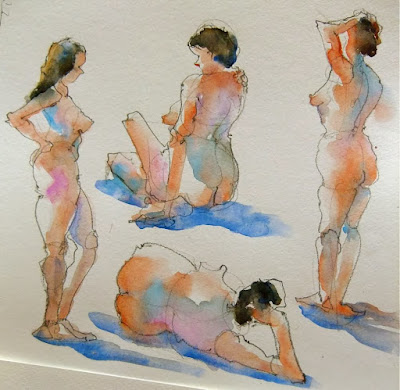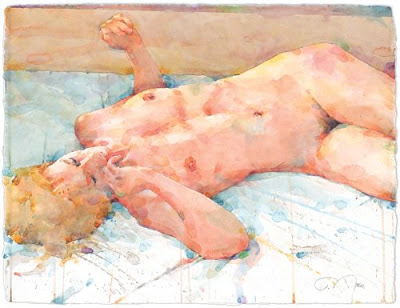Choose one that looks fun to paint. You may want to make a quick monochrome value study first. Make notes about the relative values of each shape. Where would you like to make adjustments for the sake of the painting? Not everything you see in a photo is best "as is".The foreground shadows in the Monument valley image, for example, are too dark. They come off as flat black shapes. If you were really there, you'd be able to see into those shadows and observe much more than the photo displays.
When you're confident about the relative darkness of the shapes, devise your palette. Make sure you select colors that can make a dark enough dark to tell the story. This exercise REQUIRES having a practice paper handy. Remember to bracket the values, looking for something lighter than the shape you are about to paint, and something darker. For example, in the graveyard scene, the headstone on the left is darker than the sunlit grass, but lighter than the shadows on the grass.
Feel free to paint more than one image.















